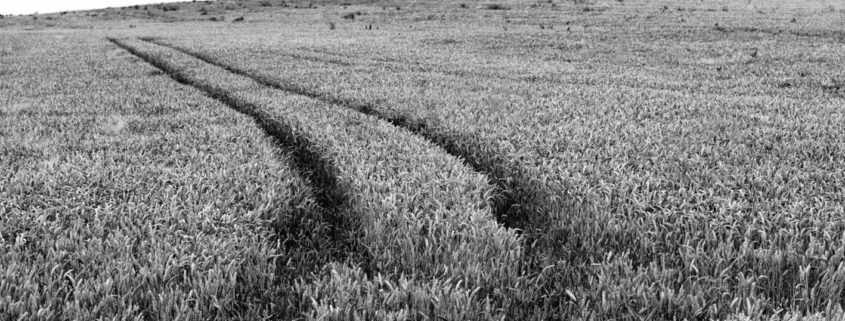Matins on Easter day is a song of joy. Heart deep, world wide, heaven high, life long.
For forty days the Church has fasted. We have denied ourselves the Alleluia and the Gloria.
We have walked the way of the cross. We have journeyed through Holy Week. We shared the foot washing and the agony in the garden. We witnessed the trial, waited by the cross and watched the body of Jesus laid in the tomb.
And now it is Easter Day. The stone has been rolled away. The grave clothes are folded and no longer needed. Christ is risen. He has appeared to Mary. A new gardener in Eden. He is walking the Emmaus Road as a shepherd, bringing home the lost. He will break bread and cook fish on charcoal in the early morning, spreading a table for his friends. He will enter rooms full of fear and breathe new life and power. He will gently test those who doubt him. He will restore those who denied him. He will interpret Scripture for his friends. He will commission them to go and make disciples. After nights of desolation, he will give them such abundance that their nets can scarcely hold the catch. He will forge frightened Galileeans into true fishers of people who will turn the world upside down. He will ascend into the heights of heaven. He will send the Comforter as he has promised. He will never leave us. He is here.
The Lord is risen. The heart of the Church is breaking open with joy. The pent up Alleluia’s overflow. The glorias abound. Jubilate everybody. The whole earth is alive with song today: cathedral choirs, organ fanfares, string quartets, drums and castanets, calypso guitars, brass and woodwind. Let everything that has breath praise the Lord.
All of our hymns and songs and anthems are pure joy. On this day we need the Easter Anthems, the Te Deum and Benedictus and then we’ve only just begun. Even our bible readings today are songs of joy.
Miriam sings at the crossing of the Red Sea:
“I will sing to the LORD for he has triumphed gloriously”
The saints in heaven praise God for the story of salvation:
“Great and amazing are your works, Lord God the Almighty”.
We sing the Easter Anthems this day and for the fifty days of Easter:
“Christ our Passover has been sacrificed for us, therefore let us keep the feast”.
We are called this day above all days to Easter joy. Let that joy rise within you. Let nothing in all creation quench it or overcome it. For the Lord is risen. He is risen indeed. Alleluia.
Christians are not always famous for their joy. Pope Francis goes so far as to say this: “There are Christians whose lives seem like Lent without Easter”[i]. It’s a striking phrase. We project to the world and to one another a sense that we are burdened and worn down, serious and dull, too earthly minded to be any heavenly use. Our church needs to rediscover joy.
We are too easily overwhelmed by the sorrows and troubles of the world. There are sorrows and troubles enough this day, to be sure, as there will be tomorrow and every day of the coming year and of every year after that. But Christian joy does not depend on everything being right with the world.
We are too easily overwhelmed by the sorrows in our own life. There will be sorrows enough for most of us. Sometimes they will be almost overwhelming but not quite. Joy is not expressed in the same way at all times in life, especially in times of great difficulty. But Christian joy does not depend on everything being perfect in our lives.
We are too easily overwhelmed by the imperfections in the Church and they are many. But if you wait for the life of the Church of England to be completely sorted and set right you will never know a single day of joy. For we will always be a flawed and imperfect Church like every other this side of eternity.
There is a simple lesson about joy which we are called to learn and relearn. Christians are not called to rejoice for all circumstances. We are called to rejoice in all circumstances. There is a world of difference.
To rejoice for all circumstances is deeply misguided. It leads to a forced, false joy which tries to pretend that sickness or injustice or even death are really blessings in disguise. There are terrible things in the world and terrible things in our own lives. We need to name them and grieve them and be angry about them.
But to rejoice in all circumstances is a very different calling. To rejoice in all circumstances is to understand that underneath all that is difficult, all that is written in a minor key, all the sorrow and pain and grief, a stronger, major key of joy emerges and prevails. Even in the midst of the darkest valleys we draw our strength from God in hope and joy that one day all will be well and all manner of things shall be well. And even today, and especially today, there is a well of hope which feeds the roots of our soul and rises up to joy.
For Jesus whom we love is risen.
He offered his life for our sins
He has conquered death, never to die again
He is the new Adam. He offers now abundant and eternal life.
He is Alpha and Omega, the beginning and the end.
He was killed with nails and wood and spear.
But death could not hold him.
Death has been conquered and Satan thrown down.
There is a river of life flowing from the cross which will fill the world and fills it still.
So sing you heavens and rejoice now all the earth. Let the Church echo alleluias for all of this beautiful day and the fifty days which follow.
Alleluia Christ is risen. Everything has changed. Alleluia. Gloria. Jubilate. Amen.
A Sermon in Christ Church
Matins on Easter Day, 2017
[i] The Joy of the Gospel, 6


